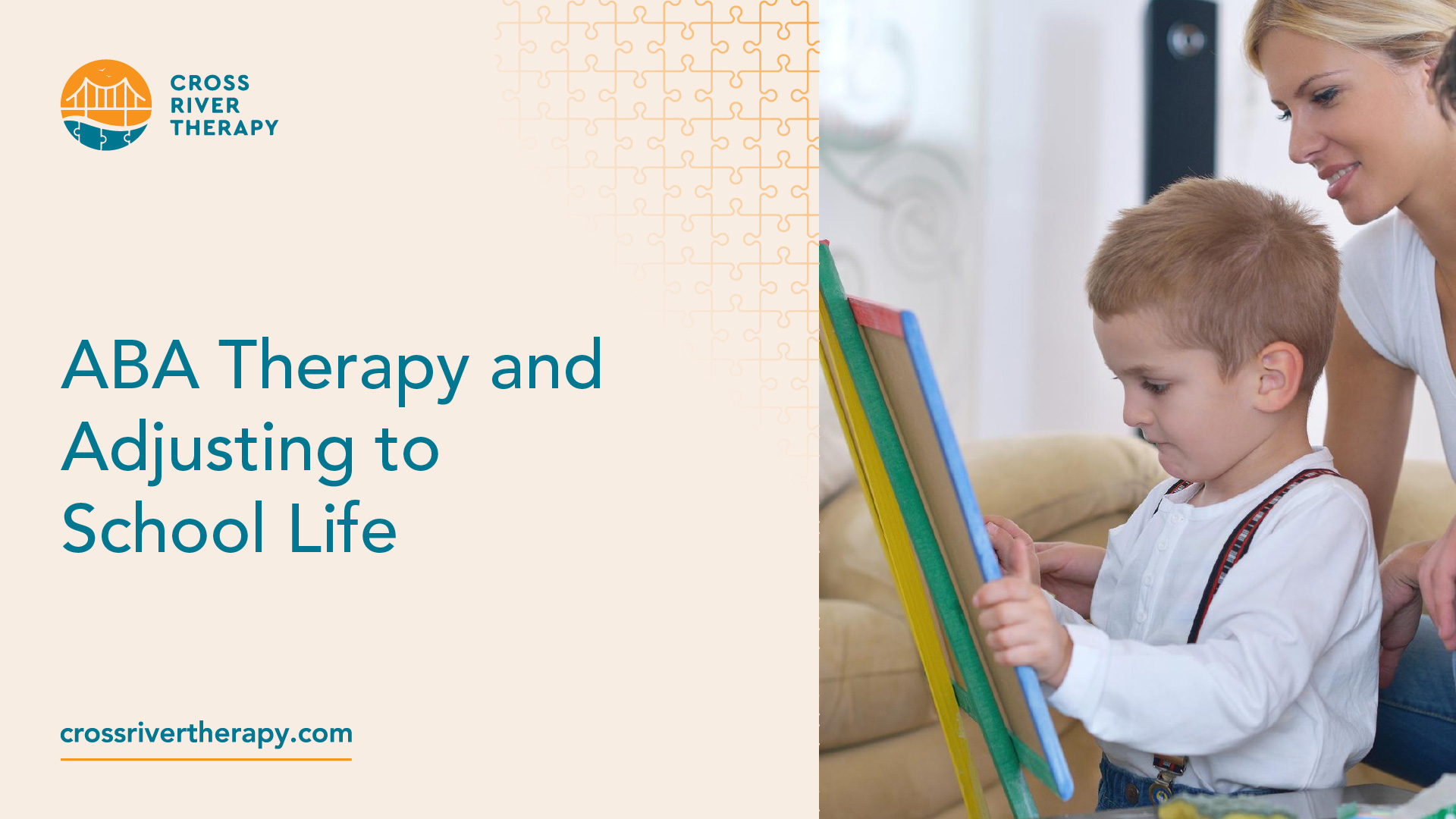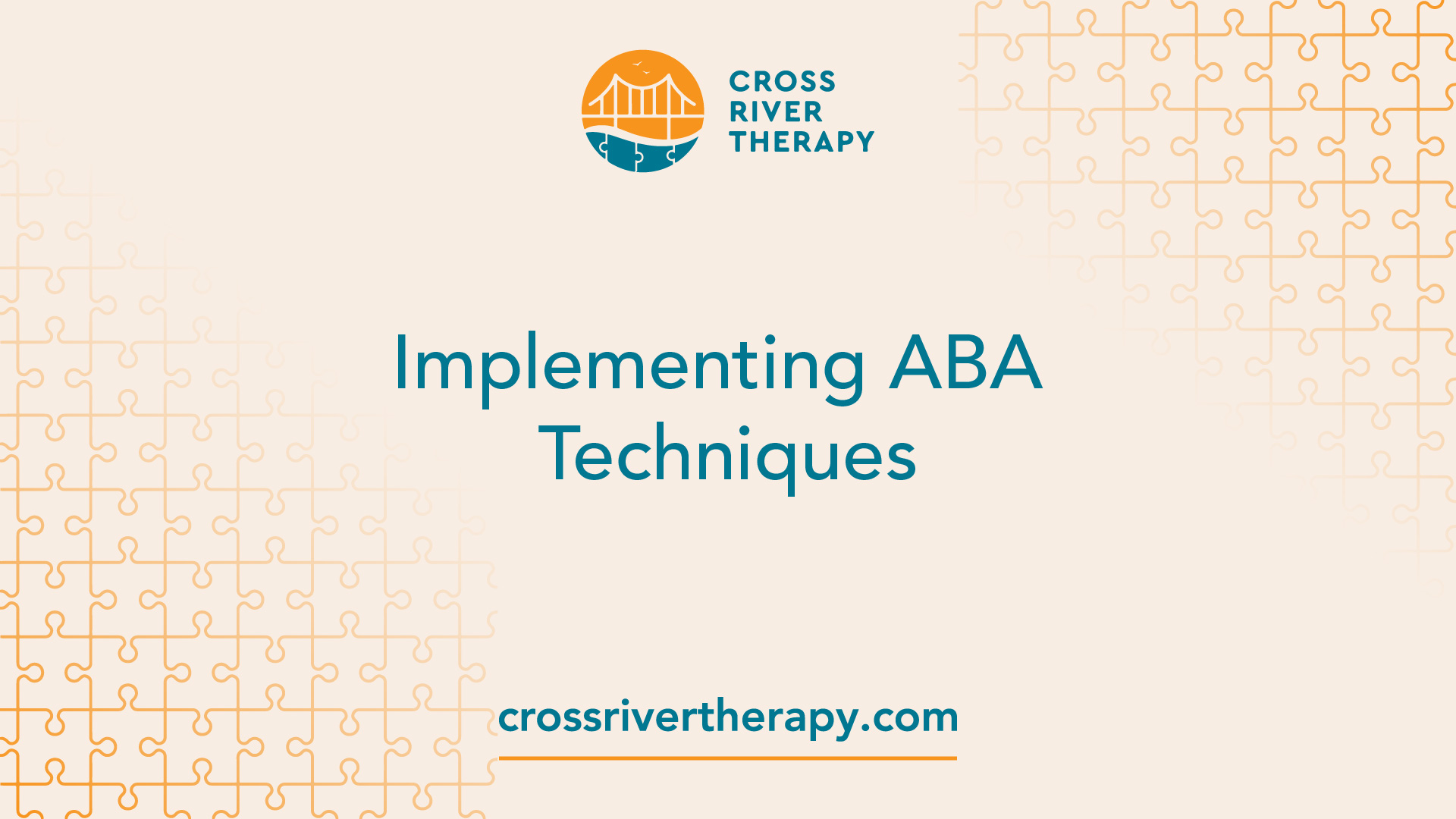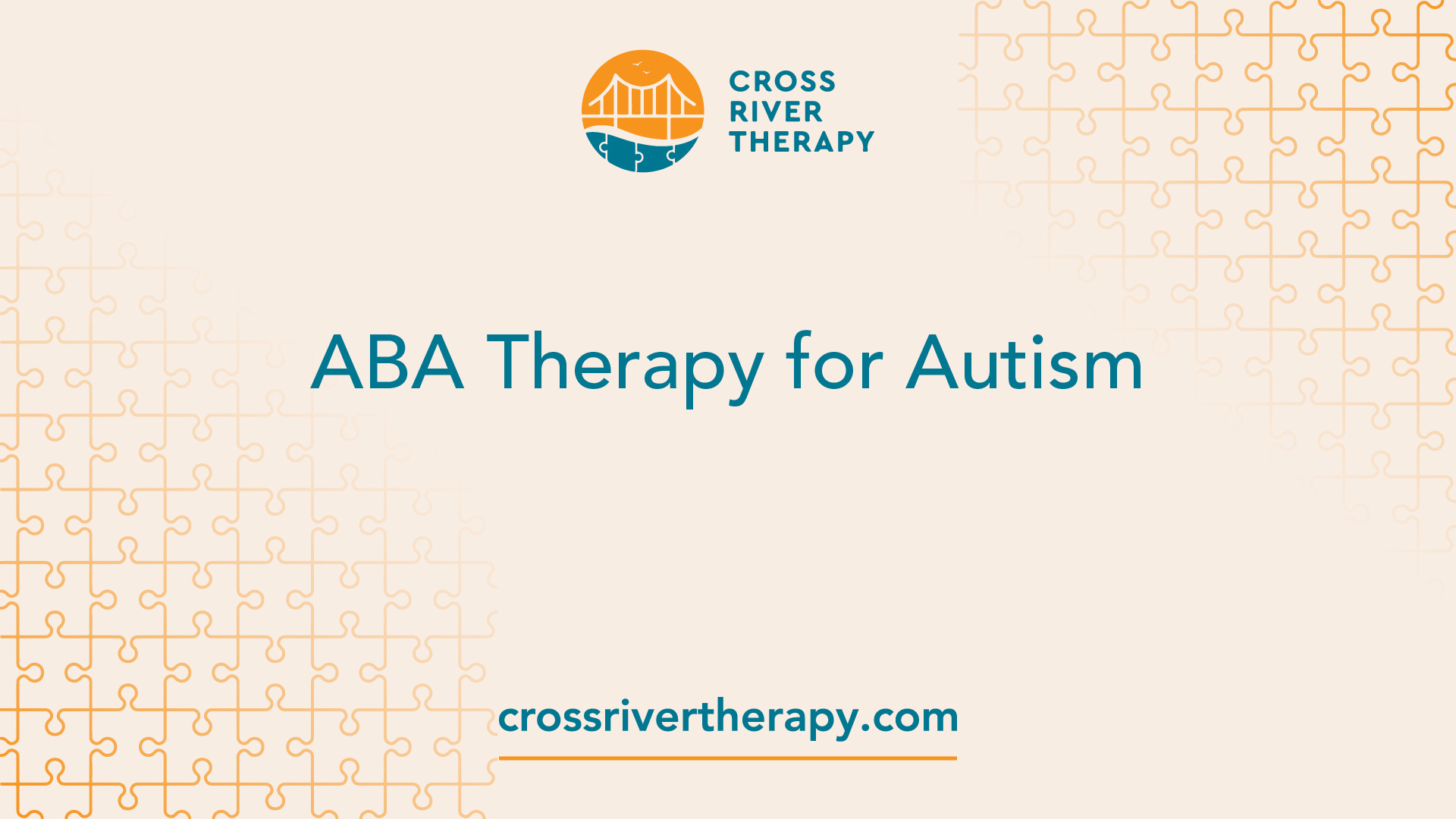ABA Therapy and Adjusting to School Life
Explore the benefits and master the techniques for achieving success.
Understanding ABA Therapy
When it comes to helping children with autism adjust to school life, ABA therapy plays a significant role. ABA, which stands for Applied Behavior Analysis, is an evidence-based approach that focuses on understanding and modifying behavior through the application of behavioral principles.

Principles of ABA Therapy
ABA therapy relies on several key principles to guide its implementation. One of the fundamental principles is the use of positive reinforcement. Positive reinforcement involves rewarding desired behaviors to increase their occurrence. By providing rewards such as praise, tokens, or other incentives, ABA therapy encourages individuals with autism to acquire new skills and reduce challenging behaviors. This approach helps individuals with autism enhance their overall quality of life.
Another important principle of ABA therapy is the focus on data collection and analysis. ABA therapists carefully observe and record behavior to monitor progress, assess the effectiveness of interventions, and make data-driven adjustments. This data-driven approach enhances the precision and effectiveness of interventions, ensuring meaningful progress for individuals with autism.
Benefits of ABA Therapy
ABA therapy offers numerous benefits for individuals with autism, especially when it comes to adjusting to school life. One of the key advantages is the emphasis on preparing individuals for transitions. ABA therapy introduces structured routines, visual supports, and social stories to help individuals with autism understand and anticipate changes. This promotes smoother transitions and reduces anxiety, enabling them to navigate the school environment with greater ease.
Additionally, ABA therapy focuses on improving communication and social interaction skills. Through targeted interventions, individuals with autism can enhance their verbal and non-verbal communication skills, which are essential for effective participation in classroom activities and social interactions with peers and teachers.
Furthermore, ABA therapy is highly individualized and tailored to meet the unique needs of each learner. A qualified and trained behavior analyst, known as a BCBA, designs and oversees ABA programs, customizing them to the learner's skills, interests, and family situation. This personalized approach ensures that the interventions address specific challenges and promote the development of skills that will make the individual more independent and successful in school and beyond.
In summary, ABA therapy provides a structured and evidence-based approach to support children with autism in adjusting to school life. By applying the principles of positive reinforcement and data-driven analysis, ABA therapy helps individuals with autism acquire new skills, reduce challenging behaviors, and enhance their overall quality of life. With its focus on preparing for transitions and improving communication and social interaction skills, ABA therapy offers invaluable benefits for children with autism in the school setting.
Implementing ABA Techniques
In order to support children with autism spectrum disorder (ASD) and other special needs, the implementation of Applied Behavior Analysis (ABA) techniques in school settings plays a crucial role. ABA therapy in schools involves the systematic application of behavior principles to enhance socially significant behaviors in students. Let's explore the use of ABA techniques in schools and the challenges that may arise during their implementation.

ABA Techniques in Schools
ABA techniques can be effectively applied in both special education and general education classrooms to support diverse learners and address a wide range of behavioral challenges. ABA therapists collaborate with special education teachers and other school staff to design and implement individualized interventions, conduct assessments, develop behavior plans, and provide ongoing support to help students with special needs succeed.
By incorporating ABA techniques into the school environment, teachers can help students improve their communication skills, social interactions, and academic performance. These techniques may include:
- Discrete Trial Teaching (DTT): A structured teaching approach where skills are broken down into smaller, manageable steps and taught in a systematic manner.
- Visual Supports: Utilizing visual aids such as schedules, visual cues, and visual schedules to enhance understanding and organization.
- Social Stories: Using personalized stories to teach social skills, appropriate behaviors, and expectations in various situations.
- Positive Reinforcement: Providing rewards or incentives to reinforce desired behaviors and encourage positive changes.
- Prompting and Prompt Fading: Offering guidance or cues to assist students in completing tasks or activities, gradually reducing the level of assistance over time.
It is important to note that the specific ABA techniques employed may vary depending on the individual needs and goals of each student. A collaborative approach between ABA therapists and educators is essential to tailor interventions and ensure their effectiveness in the school setting.
Challenges in ABA Implementation
Implementing ABA techniques in schools can present certain challenges. Some of the common obstacles that educators and ABA therapists may encounter include:
- Limited Resources: Schools may face limitations in terms of funding, staff training, and availability of qualified ABA therapists. Finding qualified professionals who are knowledgeable in ABA and experienced in working with students with special needs can be a challenge.
- Time Constraints: Teachers often have demanding schedules and may find it challenging to allocate sufficient time for implementing ABA techniques. Integrating ABA strategies into the existing curriculum and daily routines requires careful planning and coordination.
- Collaboration and Communication: Establishing effective collaboration between ABA therapists, special education teachers, and other school staff is essential for successful ABA implementation. Clear communication channels and regular meetings are crucial to ensure a cohesive approach and consistent application of ABA techniques.
- Individualization: Each student with autism or other developmental disorders has unique needs and strengths. It can be challenging to design and implement individualized ABA programs that address specific behaviors and skill deficits while considering the demands of the school environment.
Despite these challenges, the benefits of integrating ABA in schools are significant. Consistency across environments, enhanced social skills, improved academic performance, behavior management, and collaboration between therapists and educators are among the many advantages of incorporating ABA techniques in school settings. School districts, special education teachers, and ABA therapists can work together to overcome challenges through training programs, workshops, and ongoing support to ensure the effective implementation of ABA strategies.
The integration of ABA techniques in schools plays a vital role in supporting students with autism and other developmental disorders. By utilizing evidence-based practices and fostering collaboration, educators and therapists can create an inclusive learning environment that promotes the academic, social, and behavioral success of students with special needs.
ABA Therapy for Autism
ABA therapy, or Applied Behavior Analysis therapy, has proven to be highly effective in supporting individuals with Autism Spectrum Disorder (ASD) in various aspects of their lives. This evidence-based intervention focuses on teaching and reinforcing positive behaviors, reducing problematic behaviors, and promoting skill development.

ABA Therapy for Children with ASD
ABA therapy is particularly beneficial for children diagnosed with ASD. It helps address the core deficits associated with autism, including communication challenges, social skills deficits, repetitive behaviors, and restricted interests. ABA therapists work closely with children to design individualized treatment plans that target specific areas of need.
By utilizing various techniques and strategies, such as Discrete Trial Training (DTT), Natural Environment Teaching (NET), and Pivotal Response Training (PRT), ABA therapists aim to enhance communication skills, promote social interaction, and improve overall behavior. These interventions are tailored to the unique needs and abilities of each child, ensuring personalized support.
ABA therapy also focuses on promoting generalization, which means helping children transfer learned skills from therapy sessions to real-life situations. This approach enables children to apply their newly acquired skills in different environments, including school, home, and community settings.
ABA Therapy for Other Developmental Disorders
In addition to ASD, ABA therapy has shown positive outcomes for individuals with various other developmental disorders. It has been successfully applied to conditions such as Attention Deficit Hyperactivity Disorder (ADHD), Obsessive-Compulsive Disorder (OCD), speech impediments, and traumatic brain injuries.
For children with ADHD, ABA therapy provides a structured and evidence-based approach to address behavioral challenges, encourage adaptive behavior, regulate impulses, and develop better communication strategies. Similarly, ABA therapy can be beneficial for children with oppositional defiant disorder (ODD) by helping them regulate emotions, respond positively to authority figures, manage impulses, and learn problem-solving skills through reinforcement techniques [8].
ABA therapy has also been effective in supporting individuals with intellectual disabilities, such as Down syndrome. The focus of therapy is on teaching independent living skills, social and communication skills, dressing skills, toileting, and other daily functioning skills using various teaching strategies, including Discrete Trial Training.
By utilizing the principles and techniques of ABA therapy, individuals with these developmental disorders can experience improvements in their daily functioning, social interactions, and overall quality of life.
To learn more about the benefits of ABA therapy for different individuals and conditions, you can read our article on ABA therapy vs. other autism treatments.
Integrating ABA in Schools
In order to support the needs of students with autism and other developmental disorders, it is crucial to integrate Applied Behavior Analysis (ABA) therapy into school settings. This collaborative approach between ABA therapists, special education teachers, and other school staff can provide significant benefits for students.
Collaborative Approach in Schools
Successful integration of ABA therapy in schools involves collaboration between school districts, special education teachers, and ABA therapists. Together, they work to design and implement individualized interventions, conduct assessments, develop behavior plans, and provide ongoing support to help students with special needs succeed. This collaboration ensures that the strategies implemented in therapy sessions are consistent with the supports provided in the school environment.
Training programs, workshops, and ongoing support are crucial components of a collaborative approach. These initiatives help school staff gain a better understanding of ABA principles and techniques, allowing them to effectively implement ABA strategies in the classroom. By working together, ABA therapists and educators can create a cohesive and supportive environment for students with autism and other developmental disorders.
Benefits of ABA in School Settings
Integrating ABA therapy in school settings offers numerous benefits for students with autism and other developmental disorders. Some of these benefits include:
- Consistency across environments: By utilizing ABA strategies both at home and in school, students experience consistency in expectations and reinforcement. This consistency enhances the generalization of skills across different environments, making it easier for students to transfer their learned skills from therapy sessions to the classroom [6].
- Enhanced social skills: ABA therapy in schools provides opportunities for students to engage in social interactions with their peers. Through targeted interventions and structured activities, students can develop and improve their social skills, fostering meaningful connections and friendships.
- Improved academic performance: ABA techniques can be used to address academic goals and support students' learning. By breaking down complex tasks into smaller, manageable steps, students can develop the necessary skills to succeed academically, leading to improved performance and increased independence in the classroom.
- Behavior management: ABA therapy provides effective behavior management strategies that can be implemented in school settings. By identifying and addressing challenging behaviors, ABA techniques help create a positive and supportive learning environment for students, promoting appropriate behavior and reducing disruptive behaviors.
- Collaboration between therapists and educators: Integrating ABA therapy in schools allows for close collaboration between ABA therapists and special education teachers. This collaboration ensures that therapy goals align with educational goals, facilitating the consistent implementation of strategies across various settings. By working together, therapists and educators can tailor interventions to meet the specific needs of students, maximizing their learning opportunities.
By integrating ABA therapy into schools, students with autism and other developmental disorders can receive comprehensive support that extends beyond therapy sessions. The collaborative approach between ABA therapists and educators creates an inclusive environment where students can thrive academically, socially, and behaviorally.
Supporting Students with ABA
When it comes to supporting students with autism in an educational setting, ABA therapy plays a crucial role. Through the collaborative efforts of educators and behavior analysts, strategies can be implemented to create a supportive learning environment for students with autism. Two key aspects of supporting students with ABA are individualized education plans (IEPs) and language development.
Individualized Education Plans (IEPs)
Incorporating ABA therapy into schools involves the creation of individualized education plans (IEPs) that address the specific learning needs and challenges of students with autism. IEPs are customized plans designed to support the inclusion and educational progress of individuals with autism spectrum disorders (ASD).
IEPs are developed collaboratively by a team that includes educators, parents, and behavior analysts. These plans identify the student's strengths, weaknesses, and goals, and outline the strategies and accommodations needed to support their learning and development. By tailoring the educational experience to the unique needs of each student, IEPs help to maximize their potential and provide a framework for effective instruction.
Language Development in ABA
Language development is a crucial aspect of ABA therapy for students with autism. ABA techniques are often employed to enhance communication skills and promote language development in individuals with ASD. These techniques focus on building foundational skills such as imitation, receptive language (understanding spoken words), and expressive language (using words to communicate).
ABA programs use data collection and analysis to monitor progress, assess the effectiveness of interventions, and make data-driven adjustments to ensure meaningful progress. Behavior analysts, who are qualified and trained in ABA therapy, design and oversee these programs. They customize interventions to each learner's skills, needs, interests, preferences, and family situation, ensuring that the therapy is individualized and effective [3].
By incorporating ABA techniques in schools, educators can create an environment that fosters language development and communication skills for students with autism. These techniques may involve the use of visual supports, social stories, structured routines, and other evidence-based strategies to promote understanding, expression, and social interaction.
Supporting students with ABA requires a collaborative approach between educators, behavior analysts, and families. By implementing individualized education plans (IEPs) and focusing on language development, schools can create inclusive environments that support the learning and growth of students with autism.
Effectiveness of ABA Therapy
ABA therapy has been widely recognized as an effective intervention for individuals with autism spectrum disorders (ASD). In this section, we will explore the impact of ABA interventions and the findings of a meta-analysis on ABA programs.
Impact of ABA Interventions
Numerous studies have shown positive outcomes when examining the impact of Applied Behavior Analysis (ABA) on children and youth with ASD. These outcomes encompass various areas, including cognitive development, language skills, social/communication abilities, problem behavior reduction, adaptive behavior, emotional well-being, and autism symptom management.
Improvements were observed across seven out of the eight outcome measures, highlighting the comprehensive impact of ABA therapy on various domains of development. It's important to note that the study outcomes did not measure subject Quality of Life (QoL) directly. Nevertheless, the positive effects of ABA interventions in these areas contribute to an enhanced overall quality of life for individuals with ASD.
Meta-analysis on ABA Programs
A meta-analysis conducted by Virués-Ortega (2010) examined the effectiveness of ABA interventions for individuals with ASD. The findings suggested that comprehensive ABA interventions implemented in early childhood, and designed for long-term support, yielded medium to large positive effects across multiple domains.
Some of the areas where significant improvements were observed include language development, intellectual functioning, acquisition of daily living skills, and social functioning. The meta-analysis compared ABA intervention groups to control groups that did not receive ABA therapy. The results emphasized the potential of ABA therapy to make a substantial difference in the lives of individuals with ASD [9].
While ABA therapy has shown promising results, it's important to remember that each individual with ASD is unique, and the effectiveness of ABA interventions may vary. A comprehensive and individualized approach, tailored to the specific needs of the individual, is essential for maximizing the benefits of ABA therapy.
By understanding the impact of ABA interventions and the findings of meta-analyses, parents and caregivers can make informed decisions about the potential benefits of ABA therapy for their child. It is advisable to consult with professionals and qualified ABA therapists to determine the most suitable approach for addressing the unique needs of individuals with ASD. For more information on finding qualified ABA therapists, refer to our article on finding qualified ABA therapists.
References
[1]: https://qbssocal.com/what-challenges-can-aba-therapy-address-in-autism-spectrum-disorders/
[3]: https://www.autismspeaks.org/applied-behavior-analysis
[4]: https://autismabatherapy.com/school-services/
[7]: https://www.yellowbusaba.com/post/aba-in-schools-and-the-classroom
[8]: https://www.empowerbh.com/blog/who-benefits-from-aba-therapy/



